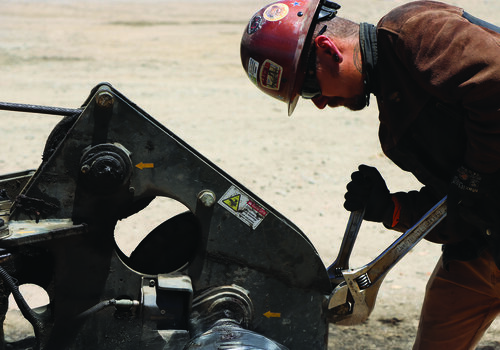According to the Associated Builders and Contractors, the industry will need to attract nearly 501,000 workers on top of the normal pace of hiring in 2024 to meet the demand for labor.
“How can any company or individual be the best version of themselves without honest feedback?” says Stacee Barkley, Global Diversity, Equity, and Inclusion leader at DPR Construction, a large commercial construction firm, and one of the founders of Construction Inclusion Week, launched in 2021.
“How do we know what to change or evolve or what to remain the same without getting feedback?” says Barkley. “Feedback is a critical element to the success of any organization.”
“We need so many younger workers, and we’re not asking the Millennial and Gen Z people who work for us what they want,” says Peggy Newquist, Principal of Constructing Opportunity, a leadership training firm focused on architectural, engineering, and construction firms.
It’s well established that women and people of color are underrepresented within the construction industry. “If we don’t learn to embrace differences, where are we going to get all the people we need?” says Newquist. She sees a reluctance within the leadership of many construction companies to get to the root of the issue.
“The construction industry needs to establish the value proposition of a career in this industry,” says Barkley. “Once we have people, retention is about making employees feel valued. They need to be seen and heard. Employees want to feel that what they do is important. They want recognition and access to the tools and resources to be successful.”
According to Newquist, researchers have identified four stages of psychological safety. The final stage is when employees can say or do and make mistakes without fear of reprisal or punishment. “To get there you need employees to believe you have their best interest at heart,” says Newquist. “When you reach this final stage, you move into high-performing teams.”
How managers can build a culture of trust
Managers are often a key reason why employees stay or go. A recent Gallup survey found that 52-percent of exiting employees say that their manager or organization could have done something to prevent them from leaving their job. Newquist offers some simple tips to help managers build the trust that will result in honest feedback.
1. Take time to listen. Getting feedback is as important as giving feedback. Ask, “What can I do to support you? How can I make your job better? “Learn to embrace the silence” says Newquist.
2. Ask questions that encourage a response, such as “How would you solve this problem?” or “Can you share what you were thinking?”
3. Show some vulnerability. Share a mistake you made, and how you learned from it.
4. Educate yourself about different cultures as well as individual preferences. Some people do not like attention, even if it is positive. Instead of making assumptions, ask “What is the best way for us to have a conversation about this?”
5. If you receive negative feedback, stay calm and reflect on what was said. Ask questions to get a better understanding of the employee’s position.
6. Recognize anxiety caused by change and address employee concerns. “If there is a lot of change in an organization such as a change in ownership, losing a big project or adding a big project, it can cause employees anxiety. Managers can help bring these issues to the forefront to be discussed.
How organizations can help build a culture of inclusion
Barkley believes it’s important for organizations to cultivate a culture of inclusion and belonging that promotes feedback. At DPR, employee feedback is part of the company’s code. “DPR/partner managers and leaders must create an environment where employees feel comfortable asking questions and raising concerns.”
DPR’s leaders – even its founders – have traditionally, sat in the mix with a variety of employees in different roles and responsibilities. That proximity not only helps leaders understand employee pressures but also helps build an environment that encourages everyone to engage. Over the past three years, DPR has focused attention on becoming an even more inclusive workplace – creating an environment where all employees feel psychologically safe to give feedback. Here are some of the ways DPR ensures employee voices are heard.
1. Break down language barriers. At DPR, essential employee-facing documents are translated into print format. English as a Second Language classes as well as Spanish classes for English-speaking employees are also offered. Recently, DPR also introduced onsite translation in real-time at employee meetings and events.
2. Encourage feedback through an anonymous hotline. DPR’s ‘See Something, Say Something Hotline’ empowers employees to provide feedback anonymously without fear of reprisal.
3. Engage managers to move from “unconscious bias” to “conscious inclusion” through training. Unconscious biases can result in assumptions based on race, age, gender, or appearance.
4. Train managers to be more effective coaches and build listening skills. “At DPR we talk about agreement not being a requisite for understanding” says Barkley.
5. Allow feedback to come through multiple modalities -- from one-on-one conversations and small group meetings to employee surveys, town-hall meetings and a hotline, more ways of capturing feedback increase the opportunity for all voices to be heard.
6. Be intentional about connecting with employees, especially if there are fewer in-person meetings or events taking place. Reach out via phone or email.
7. Share what your company stands for and against. “Conversations around diversity, equity, and inclusion are critical to employees feeling heard, seen, and valued” says Barkley.
Beyond feedback - Taking the next steps
According to Newquist, once organizations are successful at getting feedback, one of the biggest mistakes is to not take any action on the feedback. “If this happens, employees lose trust and won’t give feedback again” she says.
Barkley believes any construction company, regardless of size or focus, is capable of working to create a culture of inclusion that supports employee feedback. It begins by getting to know each employee. Now is the time to welcome all workers to our industry.
Read Next
Jimmy Starbuck Talks Staff Acknowledgement and Company Culture












